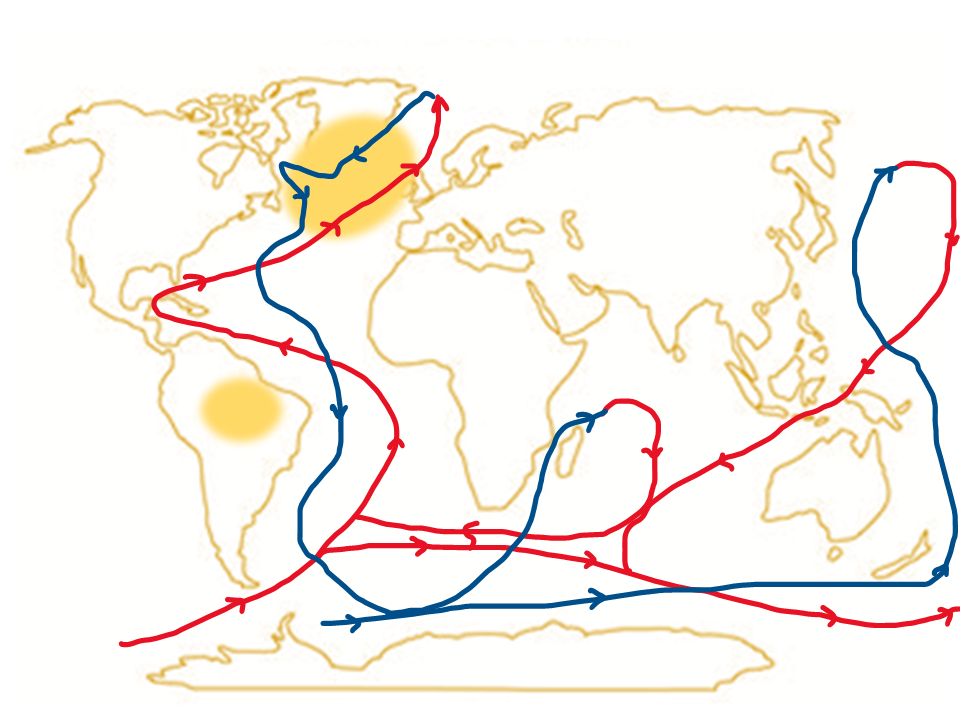Pick Up
961. Recent Research on Tipping Points

961. Recent Research on Tipping Points
The discourse surrounding climate change suggests that the Earth is steadily approaching a critical juncture known as a tipping point. This phenomenon involves the gradual accumulation of changes, such as increased levels of greenhouse gases, that ultimately lead to profound and irreversible changes in the Earth's systems, driven primarily by human activities. Key subsystems, often referred to as tipping points, are on the verge of crossing critical thresholds, including the melting of the Greenland and Antarctic ice sheets, the thawing of permafrost, deforestation in the Amazon, and the depletion of the Amazon glacier.
While these tipping points may seem discrete, there's a growing recognition that crossing the threshold of one tipping element could trigger a cascading effect that reverberates through interconnected subsystems in ways that are not immediately apparent but nonetheless consequential for the climate system. Although much remains uncertain about the mechanisms underlying these interactions, recent studies of tipping points have shed light on their potential impacts.
One such critical system is the Atlantic Meridional Overturning Circulation (AMOC), a key driver of global climate patterns driven by variations in ocean temperature and salinity. Global warming poses a threat to this circulation, with melting sea ice in the Arctic and Greenland potentially disrupting the deep circulation by introducing low-density freshwater into the North Atlantic. This influx weakens the sinking force of seawater, which becomes lighter due to reduced surface salinity. A study published in Science Advances used extensive simulation analyses to show that freshwater inflows into the North Atlantic could cause the AMOC to collapse more quickly than previously thought.
In addition, a recent study published in Nature has issued a stark warning about the Amazon tropical forest, suggesting that it may have already passed a tipping point. Known for harboring more than 10% of the Earth's terrestrial biodiversity and acting as a critical carbon sink capable of sequestering an amount of carbon equivalent to 15-20 years of global carbon dioxide emissions, the Amazon has historically played a pivotal role in stabilizing the Earth's climate. However, increasing pressures from global warming, severe droughts, rampant deforestation and forest fires have placed unprecedented stress on even the most remote regions of this vast ecosystem. Longstanding feedback mechanisms between the forest and its environment are now being replaced by new feedback loops that undermine the ecosystem's resilience. Based on various perturbations, the study predicts that between 10% and nearly 47% of the Amazon tropical forest could experience abrupt ecosystem changes by 2050, exacerbating the already pressing challenges of climate change.
The potential collapse of the Amazon tropical forest, coupled with the weakening of ocean circulation in the North Atlantic - a critical regulator of the Earth's heat balance and nutrient distribution - has profound implications for biodiversity loss and climate instability on a global scale. Our societies, which depend on the complex functioning of the Earth system, now face unprecedented and uncertain risks from the convergence of climate change and environmental crises in the Anthropocene.
References
Van Westen R. M. et al. Physics-based early warning signal shows that AMOC is on tipping course. Science Advances. Vol 10, Issue 6. https://www.science.org/doi/10.1126/sciadv.adk1189
Flores, B.M., Montoya, E., Sakschewski, B. et al. Critical transitions in the Amazon forest system. Nature 626, 555–564 (2024). https://doi.org/10.1038/s41586-023-06970-0
Contributor: IIYAMA Miyuki (Information Program)
